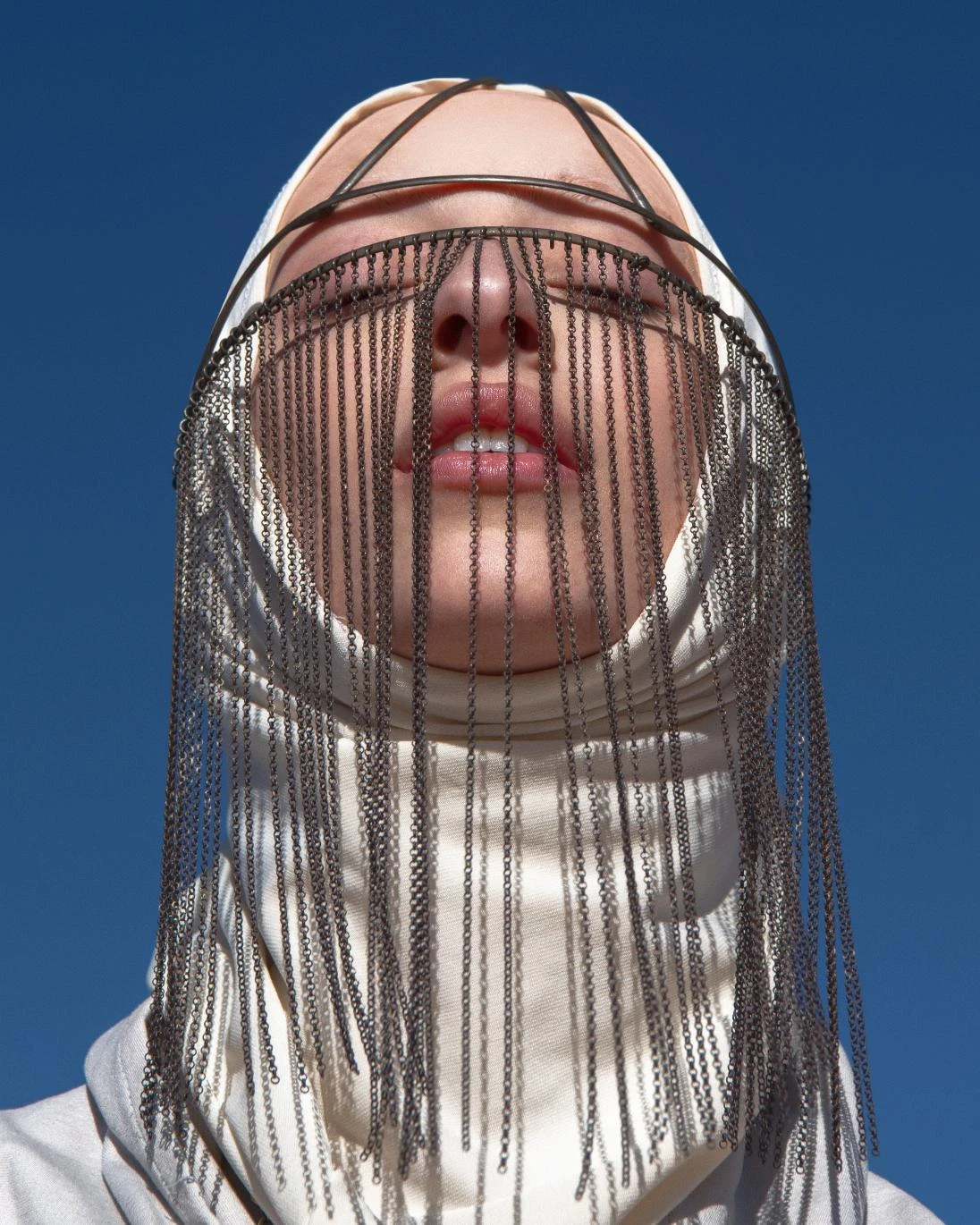
- Date
- 20 NOVEMBER 2025
- Author
- MIRA WANDERLUST
- Image by
- NAZZAL STUDIO
- Categories
- Interviews
What Should Have Been Home: Wearable Narratives of Hope with Nazzal Studio
In today's world, the urgent need to support and uplift the creative voices of future generations has never been more critical. At the forefront of this movement is Nazzal Studio is a pioneering brand embodying a profound commitment to fashion, ethics, and activism. Founded by Sylwia Nazzal, a visionary designer with Palestinian roots and who graduated from Parsons Paris, the brand is deeply rooted in a belief that art and design can serve as powerful tools for political expression and community empowerment. Through her work with Palestinian refugee women, Sylwia celebrates Palestinian heritage, crafting pieces that tell compelling stories.
Central to Nazzal Studio's mission is the creation of ethical fashion that is deeply embedded in culture and activism. The studio prioritizes collaboration with refugee women, designing key pieces that eschew mass production in favor of fostering community empowerment. This commitment to collaboration reinforces their identity as artists using clothing as their medium, aptly reflected in their naming as a “studio.” Sylwia integrates traditional silhouettes with contemporary designs, creating visually compelling statements of endurance and resilience in the face of adversity. The designs take on voluminous forms, featuring enormous puffer coats that cocoon around the body, adorned with swaddling stoles filled with down and gargantuan bows elegantly affixing the drape. Sylwia wanted these garments to be so big, to take up so much space that you can’t look away.
Intriguingly, the textiles chosen for the collection—such as nylon, camel skin, aluminum, and metal coins—are carefully selected to reflect the tenacity and endurance of the Palestinian spirit. For instance, nylon evokes the multi-faceted pressures of daily life, and the integration of coins symbolizes a connection to heritage and history. The use of coins in the garments reflects a deep connection to the past, weaving a narrative that speaks of resilience, struggle, and the celebration of a rich cultural identity. Sylwia’s inspiration stems from her upbringing in Jordan, where she was surrounded by a proudly Palestinian family. Growing up, Palestine was a recurring topic, instilling in her a necessity to embrace and claim her heritage. This sentiment was further reinforced during her university studies, where she faced challenges in finding reference points that represented her culture. A pivotal moment came during a visit to Palestine, where she discovered a wealth of materials that informed her work, from traditional dress to personal stories shared by locals.
The color palette of the collection is thoughtfully chosen to embody the complexities of Palestinian identity. Deep reds symbolize bloodshed and sacrifice, while shades of grey and beige illustrate the struggles endured. Together, these colors create a narrative that not only addresses pain but also celebrates the resilience and continuity of Palestinian culture. Each piece in the collection is imbued with a sense of collective strength and unity, reflecting the unwavering spirit of a people enduring relentless adversity.
A standout offering from Nazzal Studio’s thought-provoking collection, "What Should Have Been Home," is the Camel Hoove-Shoes. Crafted from aluminum and inspired by the distinctive structure of camel hooves, these remarkable shoes serve as a compelling embodiment of themes central to the collection: heritage, nomadic identity, and resilience. Sylwia sought to create footwear that merges functionality with artistic innovation, resulting in a design that not only serves a practical purpose but also symbolizes the indomitable spirit of the Palestinian people. The Camel Hoove-Shoes are an exemplary instance of how Nazzal Studio draws inspiration from the natural world and cultural symbolism. By channeling the form of a camel's hoof, Sylwia honors the ancestral significance of the camel in Bedouin culture, a creature synonymous with survival, adaptability, and strength in the arid landscapes of the Middle East. Each pair of shoes becomes a narrative device, inviting wearers to step into a story interwoven with their cultural identity, thereby fostering a deeper connection to the history and legacy of the Palestinian people. The use of aluminum, unlike traditional footwear materials, speaks to a modern reinterpretation of heritage, choosing innovative mediums that resonate with contemporary issues. The designs invite reflection on the resilience of the Palestinian spirit, with the aluminum serving as a metaphor for strength in the face of adversity. Every stitch, every curve, and every color choice in the collection is intentional; deep reds evoke the sacrifice and struggles endured by Palestinians, while earthy tones reflect the groundedness and inner strength. Through "What Should Have Been Home’’, Nazzal Studio invites us to engage with fashion as a vital means of storytelling and cultural expression—an endeavor that resonates deeply in a world eager to hear the truths of marginalized communities. Discover more inour exclusive interview with Sylwia Nazzal for Red Eye World:
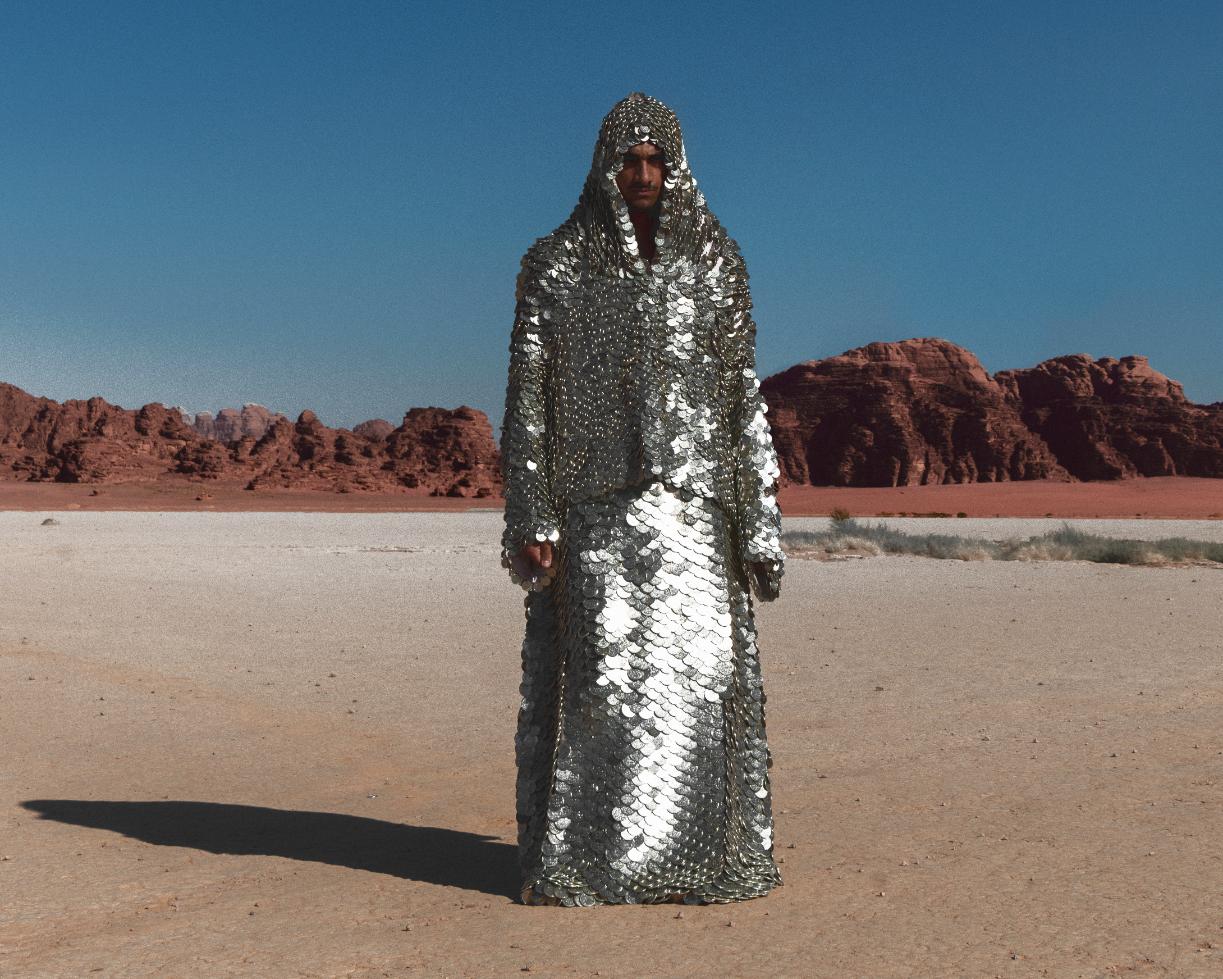
Hello Sylwia, welcome to Red Eye. Nazzal Studio is described as a pioneering brand at the intersection of fashion, ethics, and activism. Can you share how your Palestinian heritage influences your design philosophy and informs your approach to creating garments that resonate with themes of resistance?
My heritage is at the core of everything I create. It’s not just an influence; it’s the reason I make art. Growing up, I witnessed how my culture was continuously misrepresented, erased, or aestheticized by others in a way which did not honour it. Nazzal Studio was born out of a need to reclaim our heritage that's been constantly misrepresented and stories and to speak through fashion as a form of resistance. I used to see so many versions of Palestinian fashion that never felt like it was telling the true story of what is happening, it’s hard for me to talk about Palestine without directly speaking about the ongoing genocide. So I wanted to do the same thing in my work, to honour our identity.

Your latest collection, "What Should Have Been Home," explores profound themes of Palestinian resistance and cultural identity. What inspired you to choose this specific theme, and how did your academic journey prepare you to confront such impactful subjects through fashion?
“What Should Have Been Home” was my way of honouring my culture and representing it through my lens. In university I struggled deeply with how people viewed my heritage and culture, it felt racist, stereotyped and overall wrong. It gave me this sense of justice that I needed to scream to the world and do what is morally right. I wanted to translate that feeling into something tactile and visible. It was my personal experience, seeing my people’s history erased, that pushed me to confront these subjects in fashion. Inherently I have always been political, and it just was so easy to attach it to my work because it’s who I am.
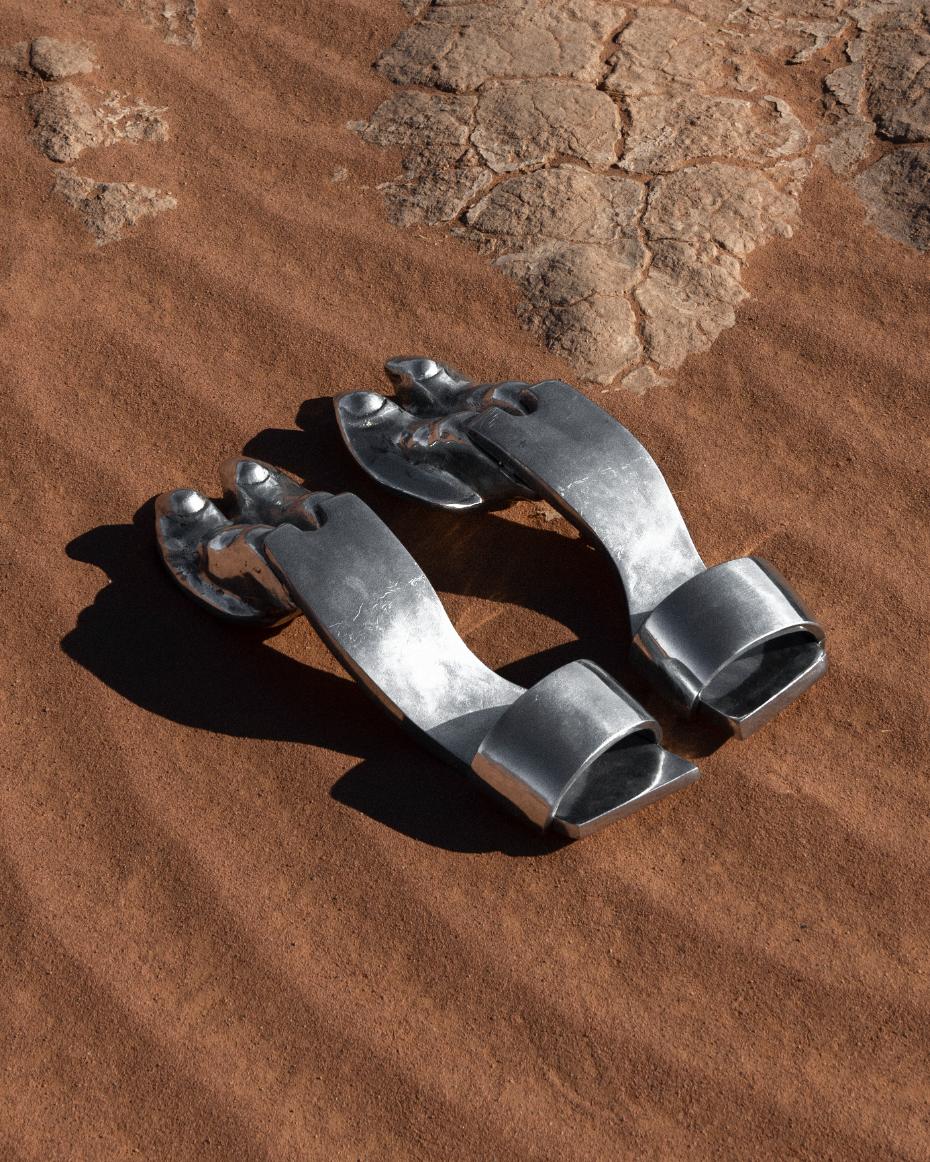
The significance of your collection intensified following the events of October 7th. In what ways do you think the fashion industry can amplify the voices of marginalized communities? How does your work with Nazzal Studio contribute to this dialogue in the current global context?
After October 7th, the silence within the fashion industry was deafening. Many brands that celebrate “diversity” suddenly became cautious when it came to Palestine. Like white feminism was celebrated, but true feminism and real politics weren’t. We have seen countless designers' inhibitions seem extremely controversial at their time but now have become celebrated as their message is more accepted. Why can’t my work do exactly that? I believe art can amplify any voice, but only when it stops treating activism as a trend. At Nazzal Studio, we do not separate fashion from politics, it’s an integrated form of storytelling. We’re not here to make Palestine “palatable.” We are here to confront the viewer, to make them feel. Zionists have not learned how to combat art, because it moves people in ways that censorship cannot suppress. That’s what makes the work powerful, and I guess controversial.
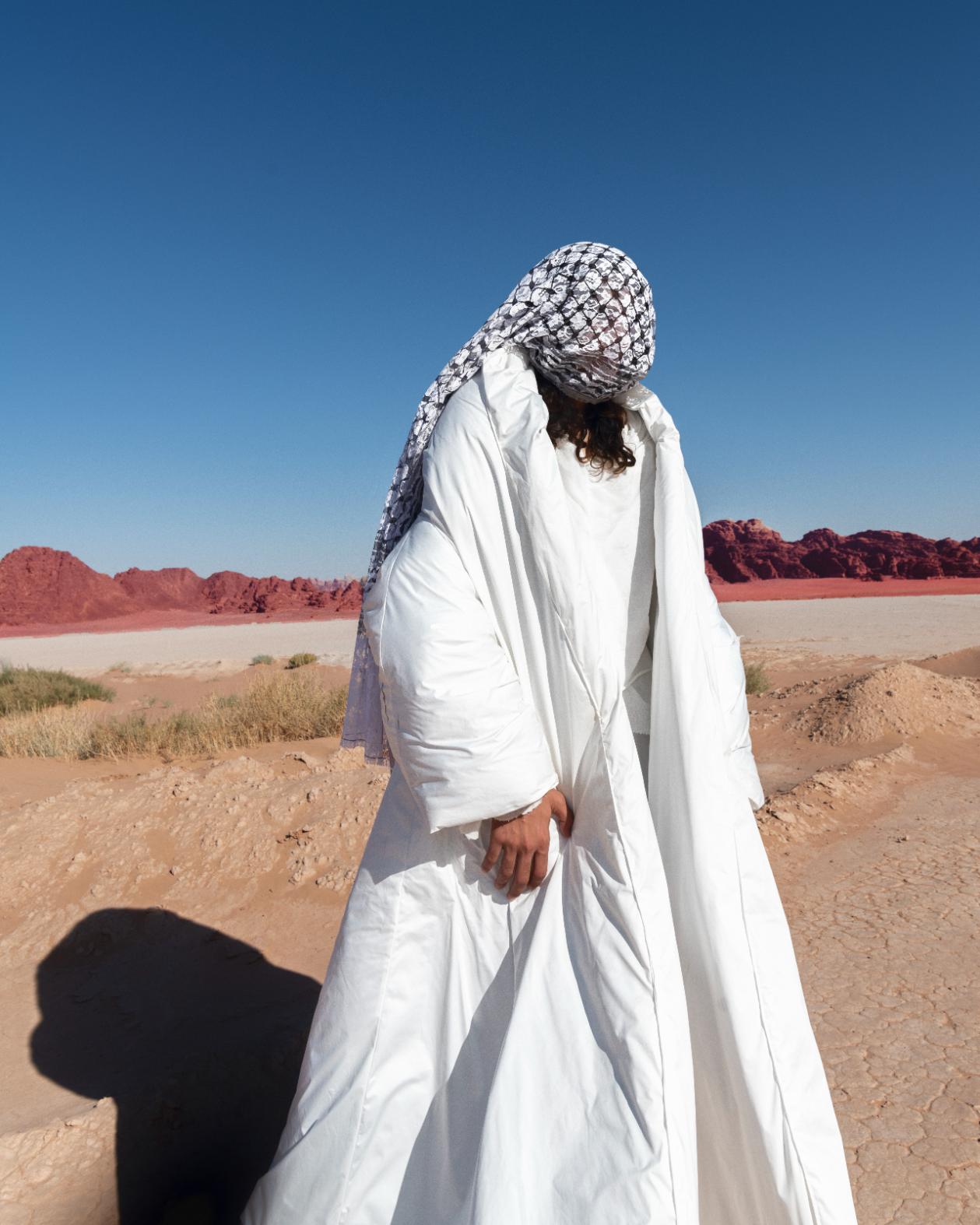
Collaborating with refugee women to design key pieces is a cornerstone of your brand. How does this collaboration empower those within the community, and what impact do you hope it will have on both the participants and the broader audience?
These collaborations are not about charity; they are about agency. The women I work with are storytellers, not labor. They bring their histories, their grief, and their hope into the garments. When they embroider or sew, it’s an act of survival and continuity. I want the audience to understand that each stitch carries a life behind it and a refusal to be erased. The collaboration transforms fashion from consumption into communion, where creation itself becomes an act of resistance.
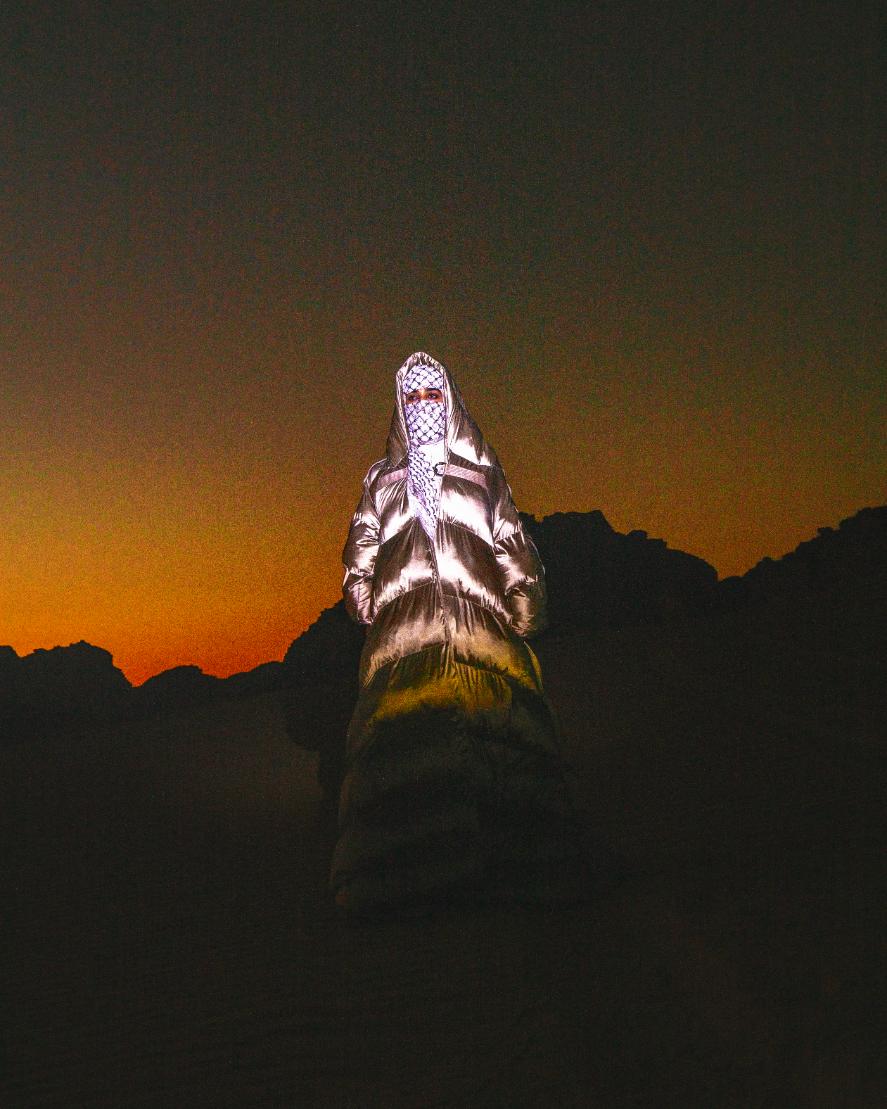
Can you elaborate on the design elements of "What Should Have Been Home," particularly how traditional Palestinian silhouettes have been merged with contemporary garments? What message do you wish to communicate through this juxtaposition of styles?
The merging of traditional silhouettes with modern structures is intentional, it mirrors the tension between memory and modernity, heritage and exile. Palestinians, whether they grew up in Palestine, just visited or are 1st or 3rd generation, we all claim our existence while it is being taken from us. That is something no other culture possesses or will ever understand, the adamant need to reclaim our heritage proudly. It almost becomes otherworldly, which is what I wanted the garments to feel. The keffiyeh, the thobe, and other traditional forms are reconstructed, not replicated. They are fragmented, reshaped, reimagined, just like our idea of home.

The textiles used in your collection, such as nylon, camel skin, and metal coins, each carry significant meanings. Could you discuss your choice of materials and how they reflect the themes of endurance, resilience, and the harsh realities faced by Palestinians?
Material choice is intentional. Nylon preserves but also protects you from harsh conditions, while also leather being natural also protects you. Then cotton, it flows but it is also traditional. Camel skin is endurance and bedouin tradition, a reminder of life in the desert. Metal coins reference the weight of history and are also a traditional technique we use to protect one from evil eye. Together, these materials form a visual language of resilience but honour our culture. They are not soft; they are meant to feel heavy and real, like the reality of Palestinian life.
Your collection aims to create an "otherworldly kind of existence" for Palestinians. Can you explain how the chosen color palette, including the dark reds and greys, reflects the emotional landscape of being Palestinian under occupation?
I wanted to create this otherworldly feeling for this collection, reinterpreting what it feels like to be Palestinian. The colour range between grey, beige, silver and gold form this sense of gloom and sadness. This monochromatic theme enhances the sense of otherworldliness, reflecting Palestinians' resilience amidst occupation and displacement, where memory and communication sustain existence. Almost creating this new universe for Palestinians to continue existing despite living in our country. The red on the other hand, breaks up this colour scheme to resemble blood, emphasising the brutal genocide.
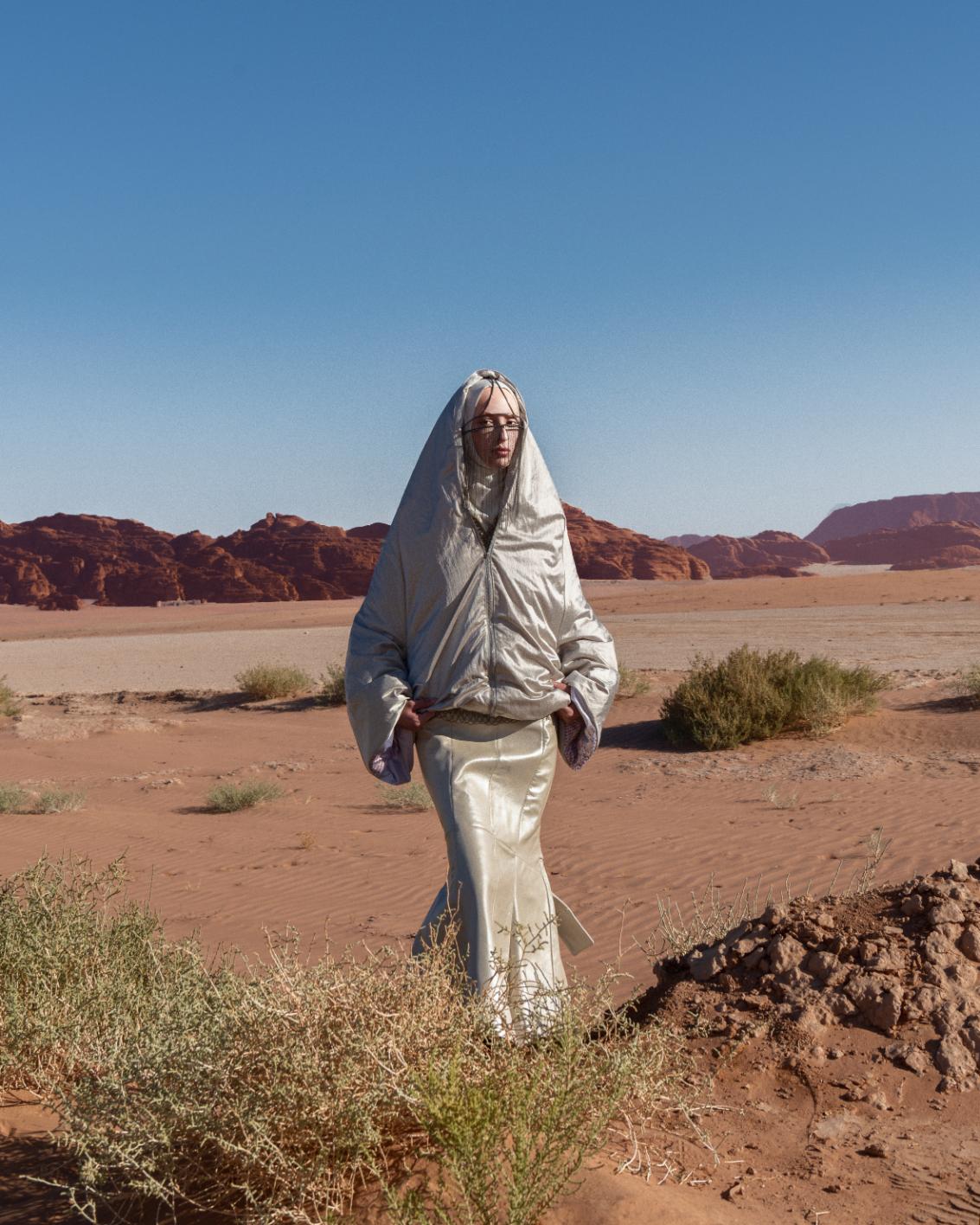
You’ve mentioned that the large and grand silhouettes in your collection are designed to ensure that Palestine is seen and heard. How do you envision the role of fashion in activism, and in what ways do you think your collection contributes to raising awareness about the Palestinian experience?
Fashion can occupy space, literally. My collection demands to be seen because Palestinians have been unseen for too long. In activism, fashion becomes the stage, it creates visibility where there has been erasure. When people see my work, what intrigues them is the silhouette, but in that process they become educated, they might either become uncomfortable or eager to see more. But no matter what they are reminded of what is happening in Palestine. I want people to feel something, and at the end of the day, the audience I am reaching is exactly who needs to hear this.
Despite the themes of pain and suffering, your collection also embodies feelings of empowerment and unity among Palestinians. How do you balance these contrasting emotions in your designs, and what reactions do you hope to elicit from those who view your work?
Pain and pride coexist. That’s the essence of Palestinian identity. My goal is not to aestheticize pain but to honor it. Each garment carries both mourning and empowerment. I want viewers to feel something real: discomfort, admiration, even confrontation. If they walk away questioning their own relationship to the images and stories they consume, then I’ve done my job.

Looking towards the future, how do you see Nazzal Studio evolving? What are your long-term goals for the brand in terms of advocating for social change and cultural resilience, and how do you plan to continue challenging conventional notions of fashion?
Nazzal Studio will always exist at the crossroads of art and activism. I want to expand the work into more collaborative projects, connecting with artists, filmmakers, and communities across the diaspora. The goal is to build a visual archive of Arab existence that cannot be erased. Long term, I hope to continue challenging the industry to look beyond aesthetics, to recognize fashion as testimony, as documentation, as evidence of survival.
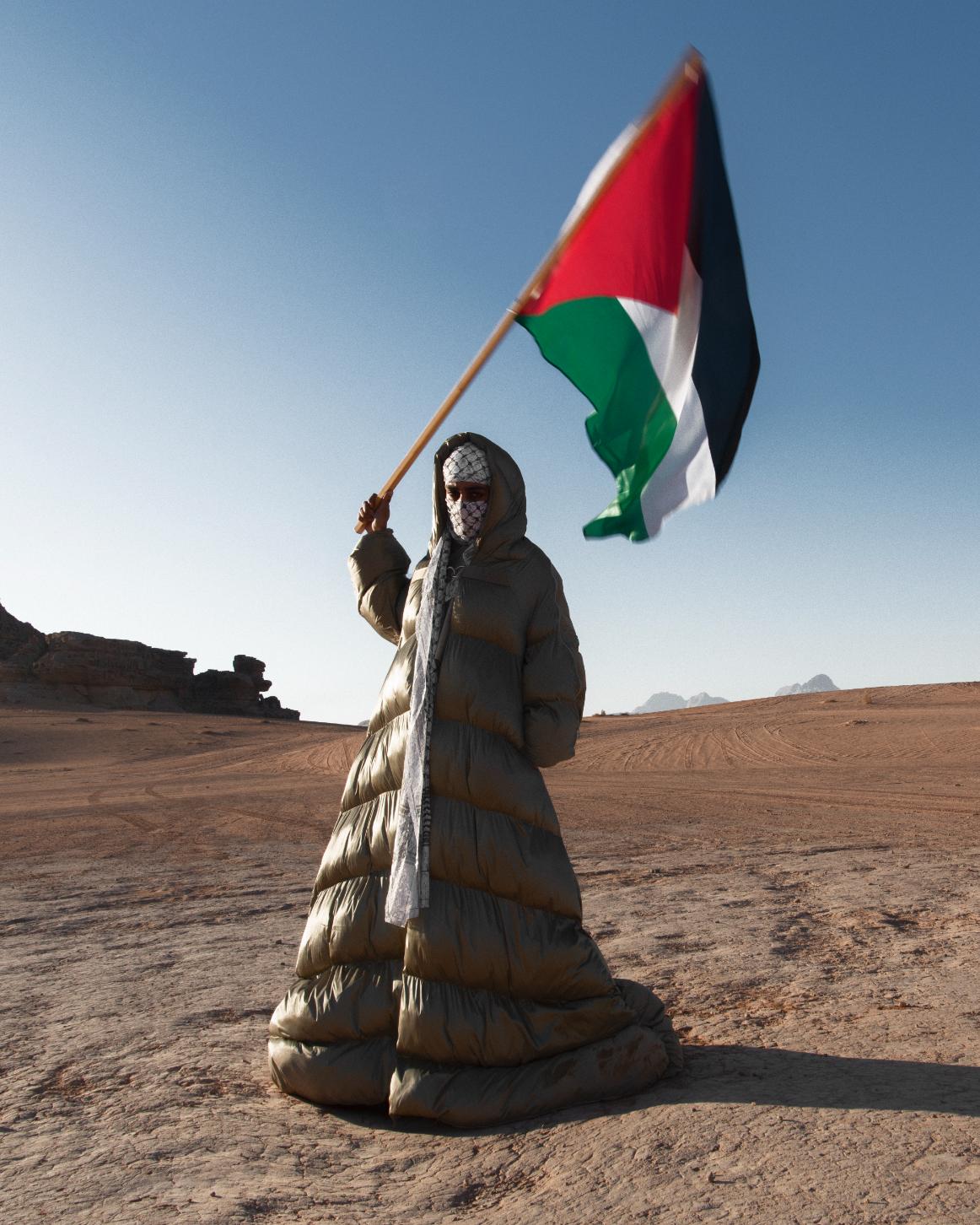
Interview by @mirawanderlust
Image courtesy of @nazzalstudio